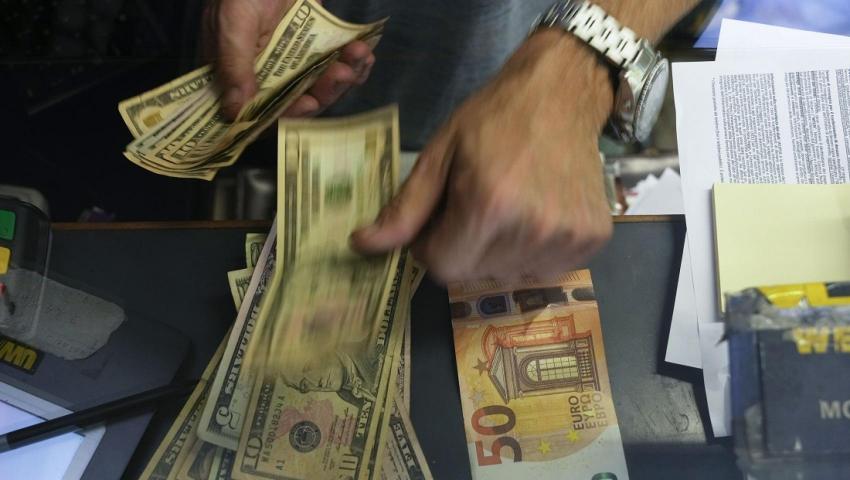Dollar gains but remains near 13-month low pending concrete U.S. interest rate news
The ICE-calculated DXY index, which tracks the dollar's performance against six major currencies (euro, Swiss franc, Japanese yen, Canadian dollar, British pound and Swedish krona), rose 0.35%

Despite Wednesday's gains, the U.S. dollar held near its lowest level in more than a year against major currencies. Market participants focused on more accurate information on the long-awaited cut in US interest rates next month.
Trading in currency markets was generally muted as market participants awaited fresh indications on the state of the world's largest economy.
Investors are unanimous in betting that the Federal Reserve will start cutting interest rates next month after Chairman Jerome Powell's dovish tone last week, with debate now centering on whether the cut will be as big as 50 basis points point. At the same time, market participants already see just over 100 basis points of downside by the end of the year.
A preliminary estimate of US gross domestic product in the second quarter is due out later this week, along with the core Personal Consumer Expenditure (PCE) index, the Fed's preferred measure of inflation.
In addition, preliminary data on August inflation and July unemployment in the Eurozone will be released on Friday.
The ICE-calculated DXY index, which tracks the dollar's performance against six major currencies (the euro, the Swiss franc, the Japanese yen, the Canadian dollar, the British pound and the Swedish krona), rose 0.35%, hovering near a 13-month low, reached in the previous session. The broader WSJ Dollar Index, which includes 16 currencies, rose 0.31%.
For the month of August, the dollar is headed for a combined 3.4% decline against major currencies, its biggest monthly depreciation since November 2022.
The British pound was down 0.14% at $1.3243 after hitting its highest since March 2022 against the greenback at $1.3269 on Tuesday.
The euro fell more, down 0.24% to $1.1156, but remained close to a 13-month high hit earlier in the week. The European Central Bank set a reference rate for the euro at $1.1162 yesterday afternoon.
The yen retreated further from Monday's three-week high of 143.45 yen against the greenback and was 0.23 percent lower at 144.33 yen to the dollar on Wednesday.
Bank of Japan Vice Chairman Ryozo Himino confirmed on Wednesday the regulator's intention to continue raising interest rates, if the situation with inflation and the Japanese economy as a whole lives up to forecasts.
"The Bank's general position on future monetary policy is that it will assess the impact of market developments and interest rate hikes in July. If confidence rises that her forecasts for economic activity and consumer prices will materialize, she will adjust the level of monetary stimulus," Himino said, speaking at an event in Yamanashi Prefecture.
In commodity currencies, quotes are also in favor of the US dollar. The Australian and New Zealand dollars, which are dependent on both countries' trade with China, fell 0.14% to US 0.67965 per Aussie and 0.09% to US 0.62416 per Kiwi, respectively.
Inflation in Australia reportedly slowed to 3.5% in July after rising 3.8% in June thanks to lower energy prices. At the same time, the growth rate of consumer prices in the country remains above the target range of 2-3%, therefore the decline of the Australian dollar is greater than that of its New Zealand namesake.
The other two commodity currencies that are heavily dependent on oil prices, the Canadian dollar and the Norwegian krone, respectively fell by 0.04% to 1.34530 Canadian dollars per US dollar and significantly more, by 0.42% to 10.50473 kroner per US dollar. U.S. light oil (WTI) futures rose 7 cents to $75.60 a barrel, in mostly European trade Brent rose 8 cents to $79.63 a barrel.
Oil was little changed on Wednesday after a sharp decline in the previous session ended a three-day winning streak. Both oil prices fell more than 2 percent on Tuesday, snapping a three-day streak of gains of more than 7 percent, as concerns about tight refinery profit margins weighed on expectations for fuel demand amid data, showing that global consumption growth was lower than forecast. In addition, concerns remain about potential supply losses from the Middle East and North Africa, as well as worries about global fuel demand.
*Exchange rates and oil quotations are current as of 10:30 a.m. Bulgarian time, sources "Reuters" and Trading Economics.
